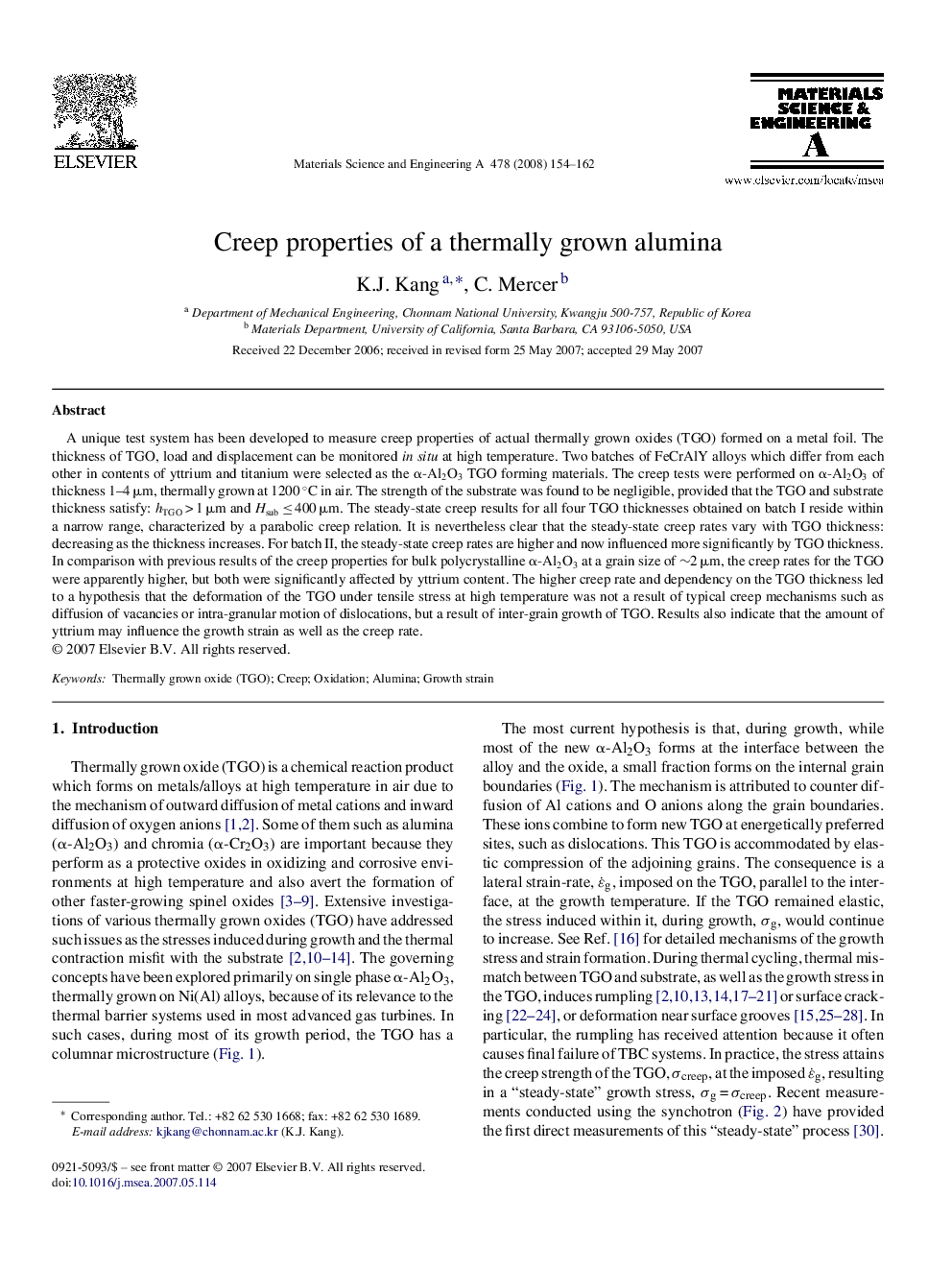| Article ID | Journal | Published Year | Pages | File Type |
|---|---|---|---|---|
| 1583178 | Materials Science and Engineering: A | 2008 | 9 Pages |
A unique test system has been developed to measure creep properties of actual thermally grown oxides (TGO) formed on a metal foil. The thickness of TGO, load and displacement can be monitored in situ at high temperature. Two batches of FeCrAlY alloys which differ from each other in contents of yttrium and titanium were selected as the α-Al2O3 TGO forming materials. The creep tests were performed on α-Al2O3 of thickness 1–4 μm, thermally grown at 1200 °C in air. The strength of the substrate was found to be negligible, provided that the TGO and substrate thickness satisfy: hTGO > 1 μm and Hsub ≤ 400 μm. The steady-state creep results for all four TGO thicknesses obtained on batch I reside within a narrow range, characterized by a parabolic creep relation. It is nevertheless clear that the steady-state creep rates vary with TGO thickness: decreasing as the thickness increases. For batch II, the steady-state creep rates are higher and now influenced more significantly by TGO thickness. In comparison with previous results of the creep properties for bulk polycrystalline α-Al2O3 at a grain size of ∼2 μm, the creep rates for the TGO were apparently higher, but both were significantly affected by yttrium content. The higher creep rate and dependency on the TGO thickness led to a hypothesis that the deformation of the TGO under tensile stress at high temperature was not a result of typical creep mechanisms such as diffusion of vacancies or intra-granular motion of dislocations, but a result of inter-grain growth of TGO. Results also indicate that the amount of yttrium may influence the growth strain as well as the creep rate.
